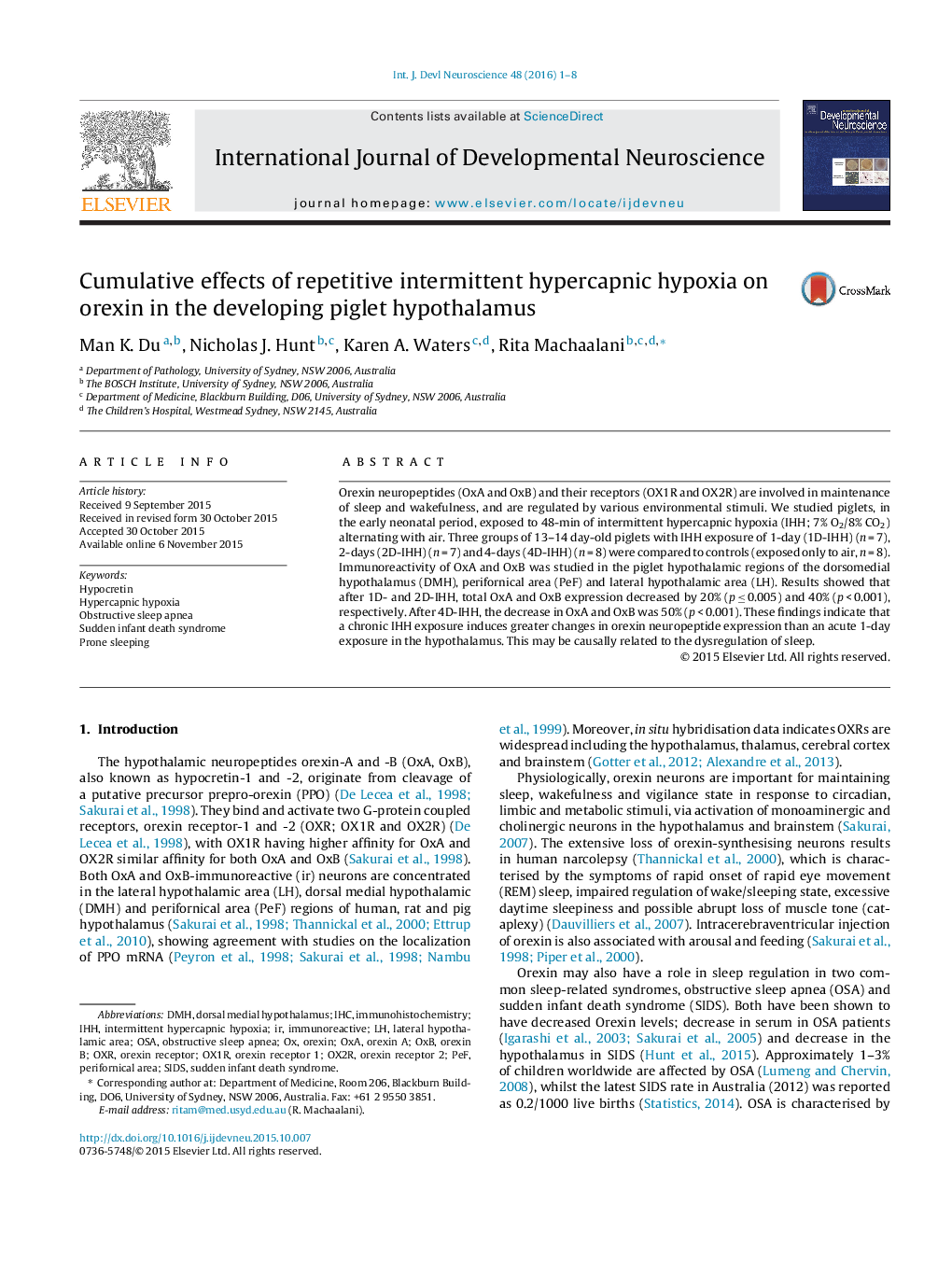| کد مقاله | کد نشریه | سال انتشار | مقاله انگلیسی | نسخه تمام متن |
|---|---|---|---|---|
| 2785626 | 1568382 | 2016 | 8 صفحه PDF | دانلود رایگان |
• Chronic (4 days) intermittent hypercapnic hypoxia (IHH) induces a greater decrease in orexin compared to 1 day IHH.
• Orexin levels decreased by 50% after 4 days of IHH.
• Decreased orexin was consistent amongst 3 hypothalamic regions studied; dorsomedial, perifornical and lateral hypothalamic areas.
Orexin neuropeptides (OxA and OxB) and their receptors (OX1R and OX2R) are involved in maintenance of sleep and wakefulness, and are regulated by various environmental stimuli. We studied piglets, in the early neonatal period, exposed to 48-min of intermittent hypercapnic hypoxia (IHH; 7% O2/8% CO2) alternating with air. Three groups of 13–14 day-old piglets with IHH exposure of 1-day (1D-IHH) (n = 7), 2-days (2D-IHH) (n = 7) and 4-days (4D-IHH) (n = 8) were compared to controls (exposed only to air, n = 8). Immunoreactivity of OxA and OxB was studied in the piglet hypothalamic regions of the dorsomedial hypothalamus (DMH), perifornical area (PeF) and lateral hypothalamic area (LH). Results showed that after 1D- and 2D-IHH, total OxA and OxB expression decreased by 20% (p ≤ 0.005) and 40% (p < 0.001), respectively. After 4D-IHH, the decrease in OxA and OxB was 50% (p < 0.001). These findings indicate that a chronic IHH exposure induces greater changes in orexin neuropeptide expression than an acute 1-day exposure in the hypothalamus. This may be causally related to the dysregulation of sleep.
Journal: International Journal of Developmental Neuroscience - Volume 48, February 2016, Pages 1–8
